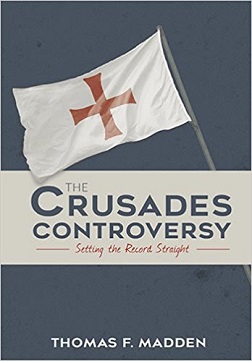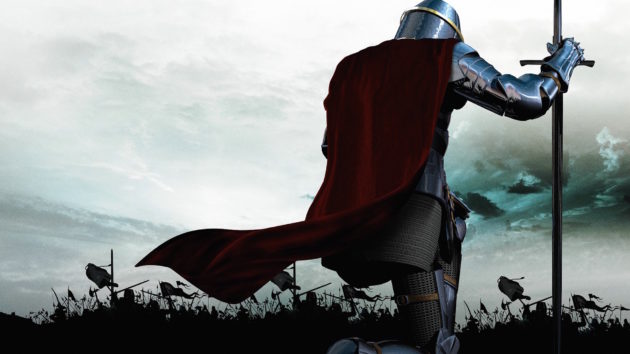How many times does the word ‘sword’ appear in the Bible?
The word sword has a special place in the Holy Bible. Most members of the clergy don’t present sermons on this important symbol to their flocks.
Perhaps it is time to revisit the different uses of the sword in the Old (Hebrew) and New Testament.
Bible Gateway lists a total of 406 passages in the Bible that have the word sword. Of these 373 are in the Old (Hebrew) Testament and 33 in the New Testament. From Genesis to Revelations the sword is used as both a weapon and metaphorically to bring Christians to the truth about God’s grace and his promise of life everlasting. But why the sword?
According to Knights Edge:
The sword was called by many the “Queen of the weapons”. There is a lot of merit in this epithet as the sword, throughout the ages possessed beauty in its many forms and the art with which it has been adorned. It took a lot of skill and sophisticated knowledge to make a sword and also, it took a lot of skill and knowledge to know how to wield the sword efficiently.
For Christians it too takes a lot of skill and knowledge to know how to wield the sword of God efficiently.
Hebrews 4:12 reads:
For the word of God is alive and active. Sharper than any double-edged sword, it penetrates even to dividing soul and spirit, joints and marrow; it judges the thoughts and attitudes of the heart.
Swords are in the shape of a cross.
 Many people link the use of the sword in Christianity to the crusades and the crusaders who wore a cross on their tunics.
Many people link the use of the sword in Christianity to the crusades and the crusaders who wore a cross on their tunics.
Thomas F. Madden, professor of Medieval History and Renaissance Studies as Saint Louis University, is a recognized expert on the Crusades. Professor Madden in his book “The Crusades Controversy: Setting the Record Straight” notes,
“Prior to September 11, 2001, the world was a different place. Then, the Crusades were a faraway concept, an odd series of events in a distant and murky medieval past. Wars of religion seemed largely irrelevant to citizens of a modern secular civilization. That has changed.”
Professor Madden’s expertise in the Crusades brought him into the lime light and lead him to write how we got to this point in time. Professor Madden wrote that Osama Bin Laden,
“never failed to describe the American war against terrorism as a new Crusade against Islam, and the Americans themselves as crusaders…The Islamic State of Iraq and Syria (ISIS), for example, routinely refers to the United States, Israel, and European nations as ‘crusader states.’ Ironically this perspective is not an uncommon view in the Middle East.”
Are Christian nations “crusader states”?
Professor Madden notes that the Crusades were defensive acts to stop the spread of Islam. He writes, “Pope Urban II called the knights of Christendom to push back the conquests of Islam at the Council of Clermont in 1095. The response was tremendous. Many thousands of warriors took the vow of the cross and prepared for war.” Why did they do it? For two reasons:
- The first was to redeem [free from oppression] the Christians of the East.
- The second goal was the liberation of Jerusalem and the other places made holy by the life of Christ.
 Professor Madden writes:
Professor Madden writes:
The word crusade is modern. Medieval crusaders saw themselves as pilgrims to the Holy Sepulcher.
[ … ]
The re-conquest of Jerusalem, therefore, was understood by Christians as an act of restoration and an open declaration of one’s love of God.
[ … ]
In Medieval Europe, Crusades to the East were universally seen as acts of tremendous good. And how could they not? A crusader was one who, at great expense and personal peril, sought to rescue the downtrodden, defend the defenseless, and restore to Christendom what had been violently taken away. A Crusade indulgence, then, was a formal recognition of the penitential component of these actions. Crusaders were sinners. They undertook the Crusade not only to defend their world, but to atone for their sins. By the nature of their profession, warriors put their souls at risk. The Crusade was a means for them to save their souls. And that was no small thing. I the medieval world, where death was always near at hand, the salvation of one’s soul meant everything. It was a matter of constant concern. [Emphasis added]
Of the eight Crusade expeditions that occurred between 1096 and 1291, only the First Crusade was a success.
Is it time for a Ninth Crusade?
In a column titled “PBS Broadcasts Crusade Myths & Falsehoods” Andrew E. Harrod writes:
The Crusades were a Christian reaction to centuries of Islamic jihadist aggression that directly targeted the Catholic Church and [Saint] Francis’ followers. Frank M. Rega, a Secular Franciscan and author of Francis of Assisi and the Conversion of the Muslims, has noted that an army of 11,000 Muslims sacked Rome itself in 846 and desecrated the tombs of saints Peter and Paul. Rega’s fellow Secular Franciscan Vail noted that Muslims later in 1240 attacked the Franciscan Poor Clare monastery in Assisi, which the order’s founder herself, St. Clare, successfully defended.
Professor Madden reports:
[I]n a speech delivered at Georgetown University a few weeks after 9/11, former President Bill Clinton stated:
“Those of us who come from various European lineages are not blameless. Indeed, in the First Crusade, when the Christian soldiers took Jerusalem, they first burned a synagogue with three hundred Jews in it, and proceeded to kill every woman and child who was Muslim on the Temple Mount. The contemporaneous descriptions of the event describe soldiers walking on the Temple Mount, a holy place to Christians, with blood running up to their knees. I can tell you that that story is still being told today in the Middle East, and we are still paying for it.”
Clinton is correct that the story is still told, but it is neither accurate nor is it a long-held memory of a traumatic event. Indeed, the simple and startling fact is that the Crusades were virtually unknown in the Muslim world even a century ago. The term for the Crusades, harb al-salib, was only introduced into the Arab language in the mid-nineteenth century.
Many people see what is happening with the Muslim migration (hijrah) in Europe as a warning that Western civilization is being invaded once again. This time, however, the invasion is at the behest of the United Nations and with the support of the European Union (EU). While some members of the EU like Poland and Hungary are resisting, the pressure is mounting to allow this new invasion. Unlike previous invasions by Muslim armies, the violence comes after the migrants arrive primarily targeting women and children.
The below video by Dr. William Finley provides in five minutes a timeline of the Islamic Jihad (holy wars) and Christian crusades:
Islamic jihad is evident today in places like Gaza, Syria, Iraq, Afghanistan, Saudi Arabia and Iran. Many see the turmoil in the Middle East and the migration to Western Europe as a new Jihad. A holy war by other means.
It is time for a Ninth Crusade? We report, you decide.
The rest were killed with the sword coming out of the mouth of the rider on the horse, and all the birds gorged themselves on their flesh.
RELATED VIDEOS:
Crusades, McGuire, 2016-06-14 from Institute of Catholic Culture on Vimeo.
Crusades, McGuire, 2016-06-21 from Institute of Catholic Culture on Vimeo.




Bismillah, Educational Sir, please continue,
I am looking for a photo of the Armor of God for my teens. I think the picture on the top of this page would be perfect. Where did you get the image? Can I get it?
We got it off of Google.
Open in a new tab and then edit the picture. Name it Humble Knight Kneeling.jpg
https://drrichswier.com/wp-content/uploads/knight_humble_kneeling-1-1030×579.jpg
Not sure that I can. I renamed it but not the url.